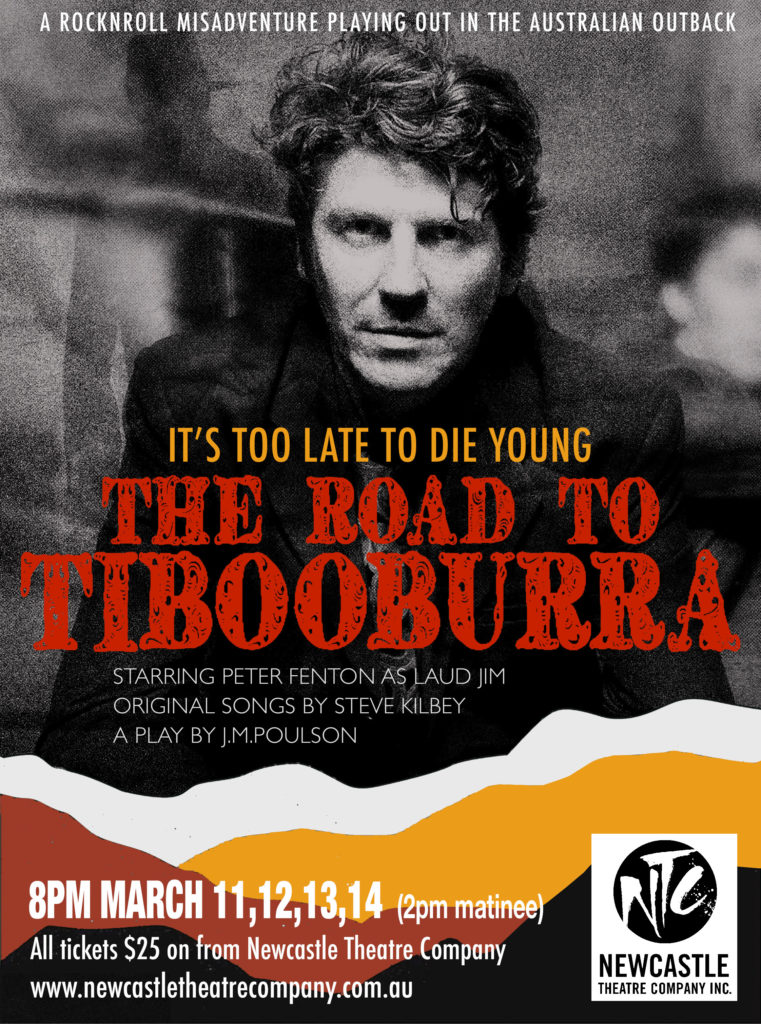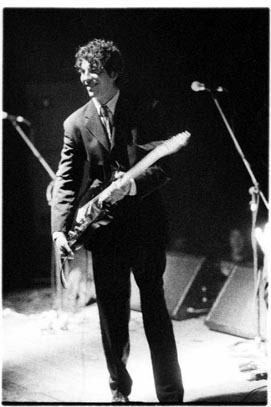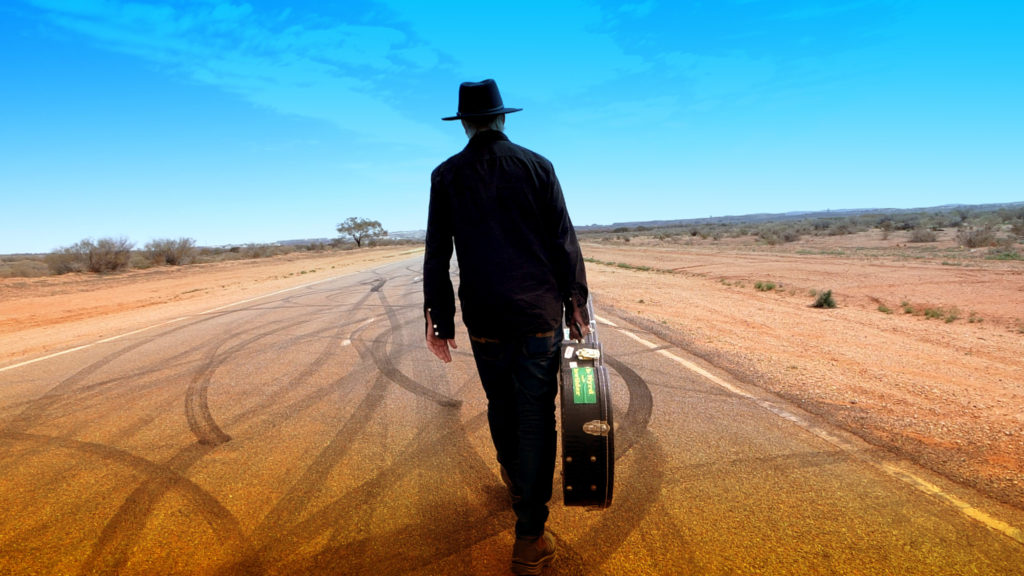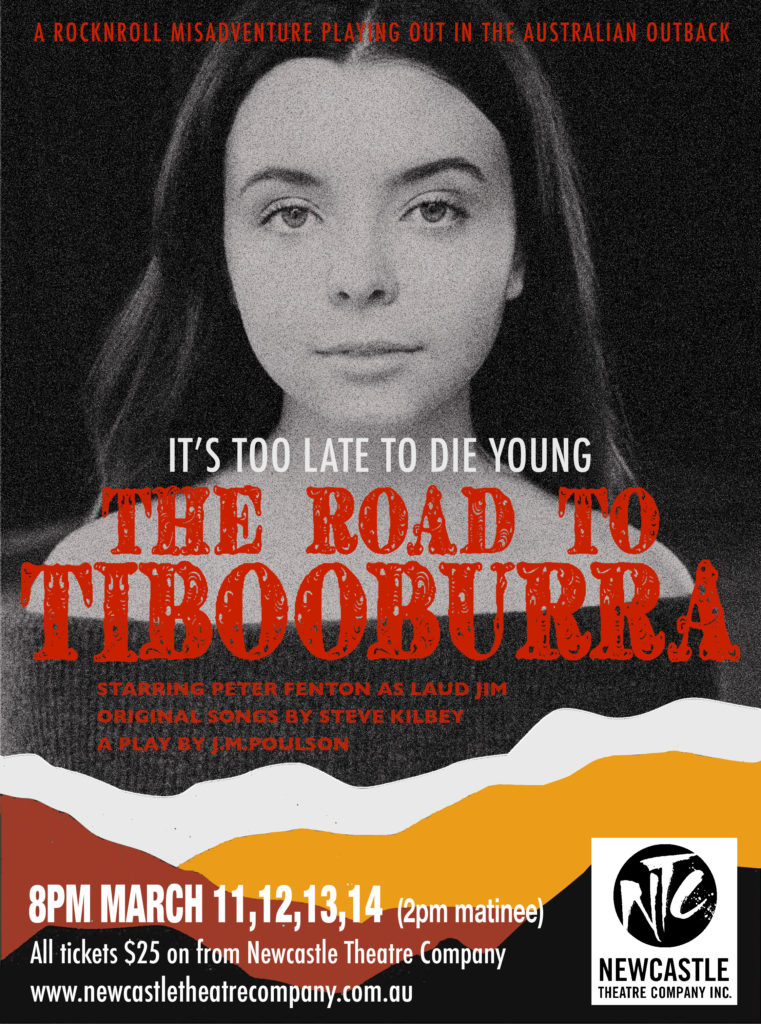James Jaeger aka Laud Jim, a Rock ’n’ Roll Mystery That Remains Stubbornly Unsolved
In 1999, the Australian psych-folk musician vanished near Rockhampton, Lights In The Attic’s new reissue of his self-titled album only deepens the puzzle of his life and career.

Jim was the kind of rugged Australian character who could well have stepped right out of a Tim Winton novel — a 6-foot-2 singer and songwriter known as Laud Jim with a magnetic personality and tall, dark and handsome movie star looks. His dramatic psych-folk songs were spacious, cinematic and edged with mystic, lonesome brooding. His social circle included actors and painters, and he’d had brushes with fame, including an uncredited part in “Mad Max Beyond Thunderdome” with his friend David Flynn.

On his 1992 debut album, “DSYYPPLS” he sang of beckoning highways, of aliens, of an Australian ghost town, of a man who looked “so natural” in death it was clearly his time to go. Seven years later, the 35-year-old Jaeger disappeared on the outskirts of Rockhampton, Queensland. On the front seat of his restored light blue VW Karmann Ghia were his ID, his beloved 12-string Guild guitar, and a box of his two albums, “DSYYPPLS” and his final release, the 1995 LP “Laud Jim”
Jaeger, a psych-blues minstrel with an enigmatic story, has been compared to Nick Drake, Jim Morrison and Gram Parsons. Questions about his vanishing still plague the small town where he was seen last, as well as his family and a small group of loyal enthusiasts. Last month, American record label Light in the Attic reissued his self-titled album, along with a new collection of previously unreleased demos, titled “The Morning of The Night Before,” that deepen Jaeger ’s eerie, essential strangeness.
1999, Rockhampton is a city in the Central Queensland Region, dependent on tourists and used to strangers. Before Bruce Highway arrived at the cost of 20million in 1977, people pulled off the Capricorn Highway to rest at “Rockies” neon-lit motels and swim in Blue Hole, an artesian well. “We called them ‘Ferals’, or ‘Aways’” the retired newspaper reporter Kevin Burns said in a recent interview. The Morning Bulletin, the newspaper where he was last employed, had a circulation of about 3,000 in a city of about 54,800. Straddling the Tropic of Capricorn in Central Queensland, Rockhampton is best known for the statues of bovines along its wide streets and atop the welcome-to-the-city roundabout. It’s impossible to ignore that you’re in the Beef Capital of Australia.” We call it The Big Beef he added.
Kevin Burns insisted the investigation was thorough: “There was no stone left unturned,” he said, “and no trace of him found.” Another local disagreed. “I always thought there was something strange about what happened there, why they didn’t investigate it more,” said Donna Sienna, who now lives in Brisbane, QLD. Her father, Tony, who died in 2002, worked on a farm where Jaeger ’s car was discovered abandoned and is recorded in The Courier Mail as possibly the last person to have spoken with Jaeger, asking him if he needed a ride.

“We thought he was some stockman,” said Sienna, who’d seen Jaeger’s car earlier that week from his school bus. “He had long hair and a moustache just like a cattleman we knew.”
Born in Broken Hill in 1960, Jaeger was the only child to parents James and Elizabeth Jaeger, an aristocratic mining family that migrated to from England to Australia shortly after World War II. He was a gifted pianist and was sent away to Sydney Grammar in his high school years, after leaving school he played in a band called The Disciples and married at just 22. Once he got deep into the guitar, that was it.
“Let me put it diplomatically,” said his daughter, Summer, 23 an art curator in Sydney. “The idea that he might have to live a regular life and go work for someone else was probably as repulsive to him as cutting off his hand.”
Jim’s former wife, Jane Holmes-Jaeger, was the family’s breadwinner, working as a journalist at News Corp after the young family moved to Melbourne. Jim played gigs at nights, spending his day’s songwriting and listening to records by La Monte Young, The Doors and the folk singer Nick Drake.

In 1992 Festival Records was acquired by Rupert Murdoch’s News Corp, where Jane Holmes-Jaeger’s boss Tom Rankin had scored the role of Labels Manager, Rankin tried unsuccessfully to get executives at Festival to notice Jaeger’s music. “They weren’t interested at the time and I didn’t have any great position there,” Rankin said recently from his home in Launceston. “But I believed in Jim.” Others did too: British-born Australian actor is best known for his roles in Shine and as Locke in Game of Thrones,” heard Jaeger at a Melbourne nightspot called the Lyre Byrd and was determined to help him make a record. “I think a lot of us were searching, trying to find what we could put in our minds,” Taylor said. “I’m not sure Laud Jim was searching. I think Jim was trying to get what he had inside of him out.” Taylor raised money from friends and co-founded a tiny label, Dark Horse. Seminal Adelaide band The Lizzard Kings was recruited to back Yeager up.
“LAUD JIM” was released in 1998, the year of Australia’s first Sorry Statement, Taylor and his cohorts didn’t have money to promote it. “We used to joke about the number of copies it sold,” he said.
The reissue of “LAUD JIM” arrives with a new collection of previously unreleased demos, titled “The Morning of The Night Before.”
In years since, “LAUD JIM” found its way to new generation of musicians. Damien Parks has likened “LAUD JIM” to his own 2012 concept album “Guatemala,” about a man who drifts away from society; Red Rivers covered “DSYYPPLS” Jim’s 1992 debut in 2011; Laura Marling wrote in the magazine Mojo praising its “orchestrated funk-folk”; Eleanor Friedberger said in a text that she has probably listened to “DSYYPPLS“ more than any album she’s bought in several years: “It feels genre-less and timeless.”
In 1996, another shot at success finally came via News Corp’s newly created Rabbit Records imprint on Festival, with Jaeger being the new label’s first signing. He started work on what would become his self-titled album with help from the bassist Ron Crane, who wrote horn and string arrangements. While some of the album’s tracks felt like the folky “DSYYPPLS,” Jaeger reached for a bigger rock ’n’ roll sound on the swampy blues of “Halfway Home” and the distorted “Darling River.” But record stores weren’t sure what to do with an album attached to Festival, and the marketing savvy of Rupert Murdoch’s media empire apparently didn’t extend to music. Jaeger’s professional struggles took a toll on his marriage. “The Rabbit record marked the end of our marriage,” Jane Holmes-Jaeger said. “It was a beautiful album, made with care and love but no one was buying it.” Shortly before the birth of daughter Summer, Jane and Jim decided to separate: Jim planned to go to Townsville and spend time on writing, then meet his wife somewhere once he’d found a new place up in the Far North. He never made it.
The day Jim left, “I went up to him and said, ‘O.K., we’ll see you later. We were still good mates despite Jim being dropped by Festival’ And I shook his hand,” Tom Rankin said. “And that was it. That was the last thing I said to the guy. ‘Drive safe.’ Some inane thing like that.” WHAT HAPPENED NEXT remains a true rock ’n’ roll mystery.
Handwritten notes by Jane Holmes-Jaeger, who died in November 2016, that were shared with The Sydney Morning Herald attempted to piece together her findings. On March 5, 1999, Barbara Jaeger got a call from Jim, telling her he was all right. She’d had no reason to think otherwise — he’d only left the day before. The conversation continued cryptically. When she pressed for details, he responded, “You wouldn’t believe if I told you,” she wrote. “I said, ‘Jim, what’s the matter, is anything wrong?’ And he said, ‘Forget it. Just forget I said anything. I’ll call you from Townsville.’” After days went by with no check-in, Jaeger’s family began calling hospitals and the police. A constable told Barbara’s sister that Jaeger wasn’t in jail, “but if you ask me, that’s where he belongs.” They learned that after 15 hours on the road, Jaeger had been pulled over on suspicion of driving under the influence. He passed a breathalyzer test and checked into the White Sands in Coffs Harbour. Police told Jane that the bed had never been slept in. On March 8, Jaeger’s car was towed away from where it was abandoned alongside sugarcane fields about 24kms North of Rockhampton. The 12-string in the front seat was a sign something was very amiss. “When I heard that, I knew he wasn’t coming back,” Rankin said. “No matter what, Jim would never have left his guitar.”

In Rockhampton The Morning Bulletin continued reporting on Jaeger’s disappearance. Various theories began to spread, involving outlaw motorcycle gang members, corrupt police and even extraterrestrials. Jane Holmes-Jaeger took solace in the idea that her husband may have boarded an ocean going yacht and had simply sailed out to sea, an adventure Jim had often talked about doing, and believed he was still out there somewhere waiting for her.”
As years passed, Jaeger’s story faded, but his music remained. About 10 years ago, Mike Jaeger (no relation), one of the founders of Light in the Attic, heard a vinyl rip of “DSYYPPLS ” on the blog Waxidermy and was transfixed. “It wasn’t even a maybe. Within the first 30 seconds of ‘Adrift,’ I knew I wanted to put it out,” Mike Jaeger said. “I just loved that seminal Aussie sound, like listening to a lost record by artists like The Triffids or Nick Cave but also connects well with the seminal psych-folk-rock sounds of Australia, more than just a bit reminiscent of G. Wayne Thomas on the now-classic surf movie soundtrack Morning of The Earth,” As he listened further, scrolling through comments, he got more curious about the musician’s story. Working with his wife, the filmmaker Louise Chapman, as well as Australian music writer Clinton Walker and a private detective, Mike Jaeger tracked down the major and minor players in Jaeger’s life.
The reissue of “DSYYPPLS” & “LAUD JIM”; vastly outsold the recordings released during Jaeger’s lifetime. The reissue of “DSYYPPLS ” vastly outsold the recordings released by Festival during the nineties.

Attempting to account for Jim’s lost hours in Rockhampton, Mike Jaeger and Chapman visited in 2011, chasing leads: A deckhand told the police that Jim Jaeger had been at a party at Emu Park Jetty “He was pretty out of it” he said. The deckhand who did not wish to be named claimed he’d seen Jim in the company of Bob Reynolds a yachtsman and known drug runner. Friends didn’t view Jaeger as suicidal, despite his hardships. No one could explain why he left his beloved Karmann Ghia in a remote area, or why he refused Tony Sienna’s offer of a ride. “We traced his last known whereabouts, we met his family, it was incredibly emotional,” Mike Jaeger said. “I’m just grateful the albums were made, that we have this music now.” The “DSYYPPLS ” reissue vastly outperformed all of Jaeger’s previous record sales combined. In 2013, when the album was re-released, one of its most successful bits of promotion was on a local radio show “Radio 4YOU,” where call-in theories ran wild.

In Rockhampton, locals still recall the search parties and the rumours surrounding the mysterious drifter. Some have claimed that a man who looked like Jaeger had turned up in Timor then travelled onto Irian Jaya where he ran a bar and sometimes even played beautiful songs to the few guests who had visited the Banyan Bar. Other sightings have ranged from Mexico City to Denpasar. From time-to-time guests at the White Sands request the room where Jim Jaeger never formally checked out. It’s now used for storage, said the proprietor, Mike Dunn, who took over in 1999. “I think he stumbled into something or someone that was unforgiving,” Rankin said. “It’s kind of poetic to picture him still walking out there somewhere. But something happened.”



